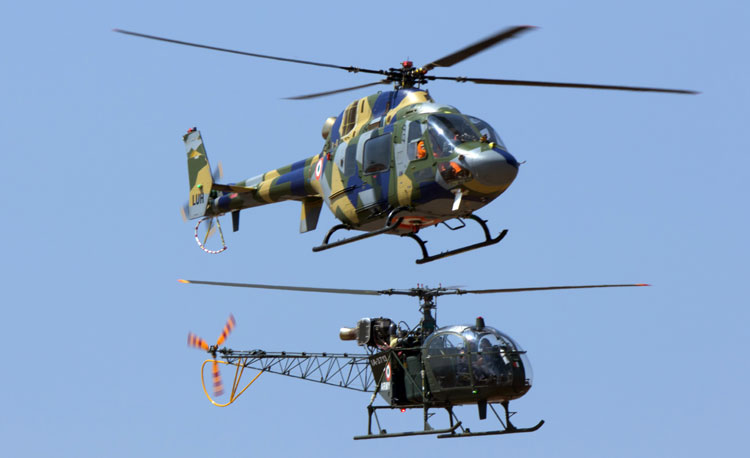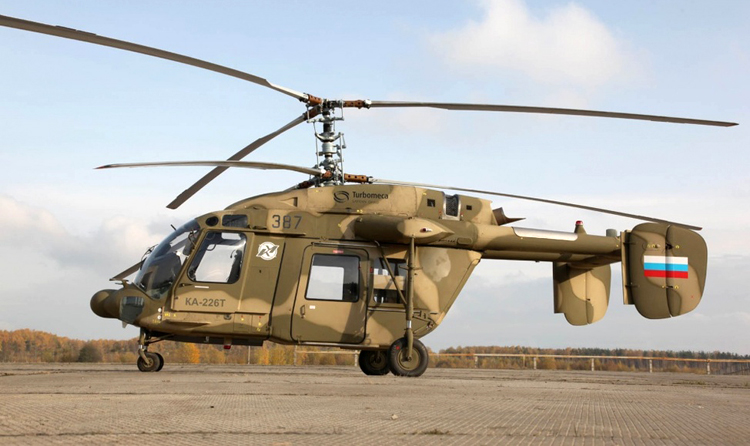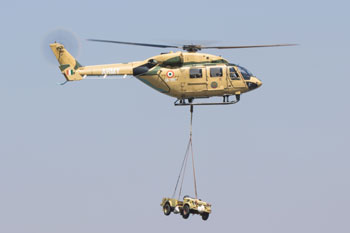INDIAN ARMED FORCES CHIEFS ON OUR RELENTLESS AND FOCUSED PUBLISHING EFFORTS

The insightful articles, inspiring narrations and analytical perspectives presented by the Editorial Team, establish an alluring connect with the reader. My compliments and best wishes to SP Guide Publications.

"Over the past 60 years, the growth of SP Guide Publications has mirrored the rising stature of Indian Navy. Its well-researched and informative magazines on Defence and Aerospace sector have served to shape an educated opinion of our military personnel, policy makers and the public alike. I wish SP's Publication team continued success, fair winds and following seas in all future endeavour!"

Since, its inception in 1964, SP Guide Publications has consistently demonstrated commitment to high-quality journalism in the aerospace and defence sectors, earning a well-deserved reputation as Asia's largest media house in this domain. I wish SP Guide Publications continued success in its pursuit of excellence.
Ageing Helicopters
 |
The Author is Former Director General of Information Systems and A Special Forces Veteran, Indian Army |

Adverse affects of decades of neglect of defence and negative defence budgets in actual terms under various governments are coming to fore, faced with the Chinese aggression. The Comptroller and Auditor General (CAG) has pointed out that the upgrade of 90 x medium lift Mi-17 helicopters of the Indian Air Force (IAF) proposed in 2002 could not be achieved even after 18 years. The Ministry of Defence (MoD) concluded a contract with Elbit Systems of Israel for the upgrade of the 90 helicopters at 618.23 crore only in January 2017 – 15 years after the IAF proposed it. In its report tabled in Parliament on September 23, CAG observed: “After upgradation, 56 of these helicopters would be left with less than two years of life. The expenditure of 222.92 crore being incurred on their upgradation is not justified.”
For the upgrade, Hindustan Aeronautics Limited (HAL) and Bharat Electronics Limited were also to supply 1,720 crore (raising overall upgrade cost to 1,942.92 crore) worth of essential components. But the contract for this has yet not been concluded between the MoD and HAL, BEL for this supply. Thus even after 18 years, upgradation of the helicopters has not been completed. Incidentally of the 90 x Mi-17 helicopters, 56 were inducted into the IAF during 1984-89 and have a ‘total calendar life’ of 35 years. This is indeed a sad state of affairs and the irony is no one would be held accountable for the slipshod handling and wasteful expenditure.
The CAG report specifically points out the following:
- IAF initiated the proposal to upgrade 172 x Mi-17 helicopters in 2002 since the existing fleet had limitations in operating in adverse weather, night conditions and in electronic warfare dense battlefield.
- The Acceptance of Necessity (AoN) was accorded by the Defence Acquisition Council (DAC) only in 2005. But the Request For Proposal (RFP) was not issued even after two years.
- After a series of delays during which few helicopters were lost in accidents, a contract for the upgrade of 90 x Mi-17 helicopters was signed with Elbit systems.
- Two prototypes of each type (Mi-17 and Mi-17 1V) were to be upgraded by Elbit systems and delivered by July 2018 and January 2019 respectively.
- Remaining 86 (54 Mi-17 and 32 Mi-17 1V) were to be upgraded indigenously with transfer of technology (ToT) from the vendor, for which certain components and sub-systems were to be procured by HAL and BEL. This contract involving additional 1,720 crore had not been concluded till June 2020.

In another development, the Armed Forces have once again sounded alarm over their ageing and virtually obsolete Cheetah and Chetak helicopters, stressing that the 'total technical life' of these light utility choppers will begin ending from 2023 onwards. Media has quoted a senior military official saying, “The defence ministry has been told that a critical operational void is fast emerging due to the vintage single-engine Cheetah and Chetak fleets. The bulk of them are over 40 years old.”
Currently the Army, IAF and Navy hold 187 Chetak and 205 Cheetah helicopters which also service high-altitude areas like the Siachen Glacier region. These are ageing and have huge serviceability problems. The Armed Forces have been demanding new light helicopters as replacements for the past 15 years plus. Overall, the three Services together need 483 new light utility helicopters immediately and the number will keep going up with every helicopter phased out or lost. But lackadaisical attitude, vested interests and red-tape as under is hindering replacements:

- Technical evaluation for the Indo-Russia joint venture (JV) under an inter-governmental agreement signed in 2015 to manufacture 200 x twin-engine Kamov-226T helicopters (135 for Army, 65 for IAF) for over 20,000 crore is still not completed after five years and the final contract is far away. More delays mean increased operational voids.
- A proposal to produce 111 armed, twin-engine naval utility helicopters under ‘Strategic partnership’ at a cost of over 21,000 crore is hanging fire despite short listing four Indian firms (Tata, Adani, Mahindra Defence and Bharat Forge) and three foreign paartners (Airbus, Kamov and Lockheed Martin-Sikorsky) because HAL is now insisting it should also be considered. This again means long delays.
- The initial requirement of HAL’s indigenous light utility helicopters (LUH) was pegged at 111 for Army and 61 for IAF. The basic IAF variant received initial operational clearance (IOC) in February 2020 and HAL now says the Army variant is ready. But meeting overall Army and IAF requirement will likely take many years.

HAL has just rolled out the 300th Advanced Light Helicopter (ALH-Dhruv) and conducted ‘ground run’ of the first Limited Series Production (LSP) of Light Combat Helicopter-Limited Series Production (LCH-LSP). However, it appears that while HAL wants to bag every contract, its production capacity remains limited.
It will be prudent for us to acknowledge that the strain on helicopters will be very high not only due to the India-China standoff this winter but in the years to come. The possibility of limited war with China is live and there may be attrition to our helicopter holdings. China’s latest claim of not recognising Ladakh as part of India indicates China will remain hostile to India in the foreseeable future.
Considering the above, our policy makers need to ensure the following: one, number of medium lift helicopter required by the military should not be allowed to dwindle - provide replacement through ‘Make in India’ with strategic partnership with HAL or part requirement met through Buy (Global – Manufacture in India) under Defence Acquisition Procedure 2020 if numbers become critical; two, kick-start the Kamov project lying in limbo on war footing; three, let the project for 111 armed, twin-engine naval utility helicopters under strategic partnership for which Indian firms are shortlisted proceed ‘without HAL’ – involve HAL for producing medium-lift helicopters under strategic partnership, and; four, increase HAL capacity for ALH-Dhruv and LUH production.





